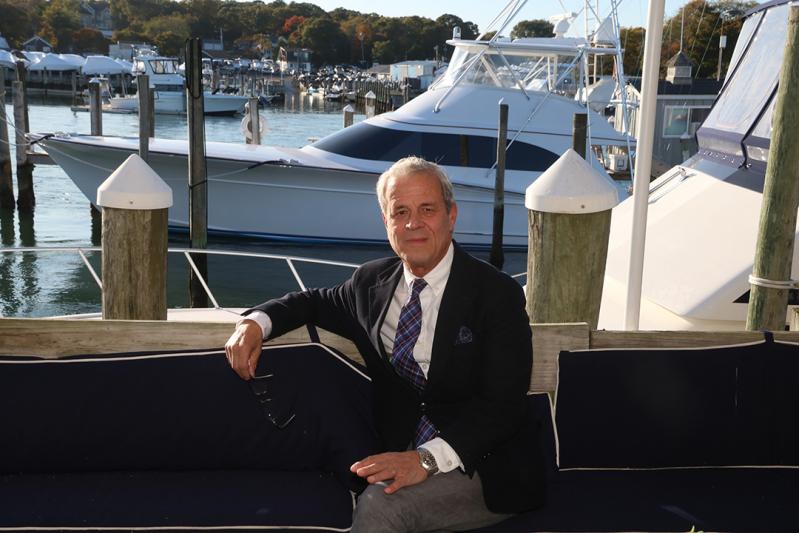Each day, the newspaper journalist Jimmy Breslin asked himself a simple question: What is the most important thing for you to know today?
The "you" here was the reader from his 50-plus-year writing career -- the powerless, the 99 percent, the victim, the "guy who loses out on a promotion," the 1962 Mets (and their fans), the "cab driver who gets held up," the un and underrepresented.
Richard Esposito, a five-time Emmy Award-winning Hampton Bays writer, captures this larger-than-life character in "Jimmy Breslin: The Man Who Told the Truth," just out from Crime Ink. Mr. Esposito would go on to be a senior executive producer at NBC News and senior investigative reporter at ABC News, but he first met Breslin almost 50 years ago when he began as a copy boy at The New York Daily News, which was one of several newspapers that Breslin wrote for in his career.
"Jimmy had a broad and wide range of emotions and a big personality with many facets," Mr. Esposito said. "So, he could be incredibly difficult. He was incredibly chaotic, but he could also be incredibly gentle."
The two met again when their careers overlapped at Newsday in the late 1980s. Writing about someone he knew personally makes for a "different kind of book," Mr. Esposito said. "It's more of a portrait," he added. "It's a biography, but it's a very personal and intimate biography." As such, many of the characters in it are people Mr. Esposito had previous relationships with.
As a journalist, Breslin, who died in 2017, was seemingly everywhere: the funeral of John F. Kennedy, his brother's assassination five years later, Occupy Wall Street, and Selma, Ala., during the civil rights movement. The story he told, however, was always the same. "It's the 99-percent -- as he put it -- trying to get what the 1-percent was trying to keep."
Along with Tom Wolfe, Breslin helped usher in the New Journalism movement, which applied a more literary edge to news writing. While Wolfe covered parties and high society on the Upper East Side, Breslin -- the "Bard of Queens Boulevard," as Mr. Esposito calls him in the biography -- was in the bars and gutters of the Far Rockaways looking for who might have been wronged by the powerful on that day.
"And if there was anyone who knew how to walk the city's darkened streets and come back with the heart of the story or enter where the gunned down lay in state and return to help you understand the world the gunned down had left, it was Breslin," Mr. Esposito writes.
Breslin believed firmly that nothing can be learned by sitting at a desk. A journalist goes "up the stairs," finds the story, and doesn't leave until it is told, Mr. Esposito said of his subject's style.
Perhaps the most famous example of this was Breslin's column about the assassination of J.F.K. While journalists scrambled to uncover the political implications of the tragedy and work through the rumors sprouting up, Breslin went in a different direction: toward the gravedigger.
"Clifton Pollard wasn't at the funeral," he wrote in 1963. "He was over behind the hill, digging graves for $3.01 an hour in another section of the cemetery. He didn't know who the graves were for. He was just digging them and covering them with boards."
Breslin understood that to cover an agency well, a reporter should know the janitor, Mr. Esposito said. To do this, leave the office.
"Nobody is ever going to trust you as well in an email or text message or Slack -- pick one -- as when they meet you face to face, and then they can decide if they like you or they don't like you," he said. "And they may not like you, but they'll still talk to you because they've seen you face to face, and you cared enough to show up."
He interviewed people close to Breslin for the book, such as his wife and daughter, and even received a letter from David Berkowitz, the Son of Sam. Breslin had interacted with him during the 1977 serial murders.
Mr. Esposito also sifted through Breslin's columns to craft his narrative. This was no small feat, as over his career he wrote more than 3,400 of them.




